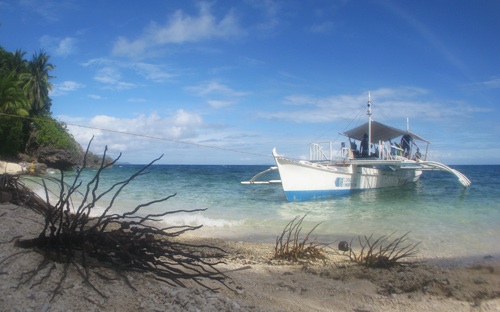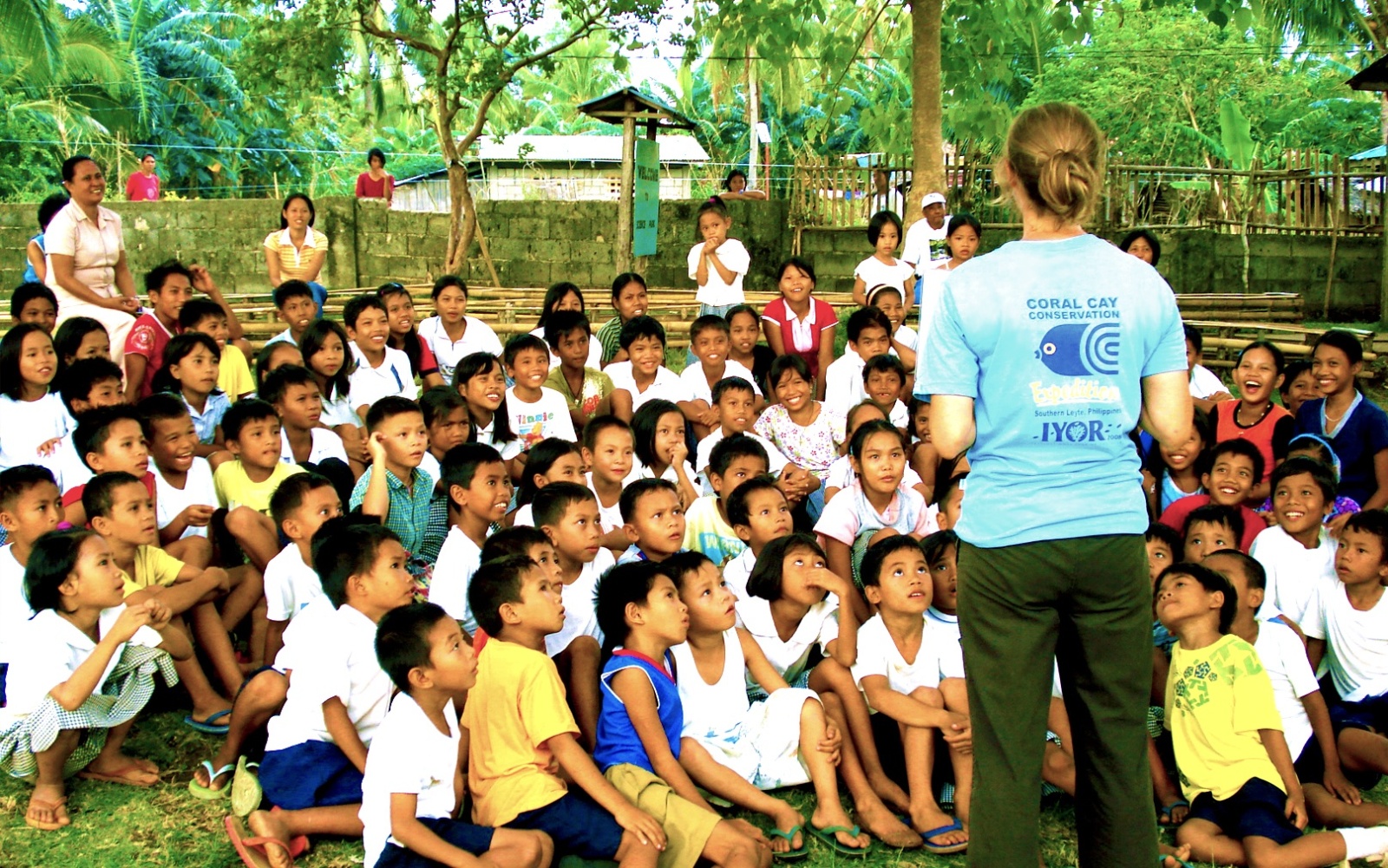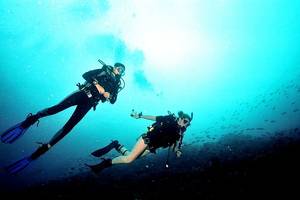Fish sanctuaries in the Philippines
Interview with
Jan-Willem - Southern Leyte is found in the central Visayas of the Philippines. And it's an area that's renowned actually for the extremely high biodiversity both on the land but particularly in the sea.
 The coral reefs there are known to harbour really vast amounts of different species. We had actually had a coral reef scientists visit our area, by the name of Doug Fenner. And on one of his dives that he did near our project site, he actually found more hard coral species than he had anywhere else in the world in a single dive. So that was an incredible result. And we realise this was a truly unique area.
The coral reefs there are known to harbour really vast amounts of different species. We had actually had a coral reef scientists visit our area, by the name of Doug Fenner. And on one of his dives that he did near our project site, he actually found more hard coral species than he had anywhere else in the world in a single dive. So that was an incredible result. And we realise this was a truly unique area.
Now Southern Leyte is not as populated as some of the other provinces. However the people that live there depend mainly on fisheries, or rice, or copra which is coconut farming, for their livelihoods. And as a result a lot of pressure is put onto the reefs there. Most of the fisheries are very small scale, little boats that go out, and they catch things like parrotfish and groupers and pretty much anything that they can get.
And this has been going on for several hundred years now. But even in Southern Leyte the population is increasing quite rapidly so there is a tremendous amount of pressure on the reefs and a lot of the reefs unfortunately have been overfished.
Sarah - And I suppose that's where the Coral Cay Conservation comes in. What is the project that you've been involved in, in order to help preserve this ecosystem?
Jan-Willem - Well we were initially invited there, Coral Cay were invited by the provincial governor at the time. It was quite a chance meeting with our senior CEO and founder Pete Raines who was sitting on an airline and happened to be sitting next to the daughter of the provincial governor. And that's how the ball got rolling.
 We were invited there back in 2002. Since then our goals and aims have been expanded and shifted somewhat towards a lot more community-related work and that includes engaging communities, providing them with workshops where we educate them more about the management possibilities that they have in order to protect their reefs. But also to sustain their fisheries more effectively.
We were invited there back in 2002. Since then our goals and aims have been expanded and shifted somewhat towards a lot more community-related work and that includes engaging communities, providing them with workshops where we educate them more about the management possibilities that they have in order to protect their reefs. But also to sustain their fisheries more effectively.
One of those means is to set up what we call community-based marine protected areas. In the Philippines they're often called fish sanctuaries.
And what they are, so basically a small area of the reef that is set apart and within that area no fishing whatsoever is allowed. There is some limited diving allowed for tourists, but other than that the area is fully protected.
It's quite a small area. And in the Philippines the way it works is every province is divided up into municipalities. And within each municipality we have what we call baranguys, and each baranguy you can compare somewhat to a parish, so it's a very local level political unit of governance.
And so every baranguy typically has several thousand people that live within it and have a particular coastline. And that coastline is completely theirs, so they have ownership of their own reefs, which is quite a unique system in the world.
And the way we've managed to allow not only to enhance fisheries we've also worked closely with the tourism sector. So there are several, initially back in 2005 there were only two dive shops. Nowadays there is at least, I think there's 5 local dive resorts now.
 And if divers wish to dive within one of those fish sanctuaries they pay a small fee, it's usually about a dollar or so, not very much money at all. But that money all goes back into the baranguy. So, the community sees financial benefits of establishing a fish sanctuary, which is great.
And if divers wish to dive within one of those fish sanctuaries they pay a small fee, it's usually about a dollar or so, not very much money at all. But that money all goes back into the baranguy. So, the community sees financial benefits of establishing a fish sanctuary, which is great.
But more importantly, what we're trying to establish is a situation where fish with a sanctuary are allowed to grow and actually reproduce and after several years fish start to leave the sanctuary and that's where they can get caught by the fishermen.
So it protects the fish within the sanctuary and in addition to that it also creates what's known as a spill-over effect. So, fish actually leave the sanctuary when there are at a size and an age where it's more productive for fishermen to catch them.
Sarah - And do you think, sort of, community-led projects like this where you really get the community involved, it's their area, and they get a financial benefit from it. Do you think this is something that would be beneficial to roll out in other areas not just in the Philippines but throughout other areas in the world as well?
Jan-Willem - Absolutely. I mean, I honestly believe that's the only way to really have successful management initiatives. I don't see it working any other way. At the end of the day, it's the people that live there that are the natural custodians of their reefs or forests or whatever it may be.
You've actually, you're going to run into the situation where those people are going to be, well they're going to be very upset by the fact that you've basically restricted them from doing what they've been doing for, you know, several decades if not hundreds of years.
So it's really, really crucial that you look for a means of allowing them to continue what they're doing at some level while also preserving those areas and it's for their own benefits.
So at the end of the day, if you can to convince that what you're doing is not only going to benefit the environment but is also going to directly help them, then I think you've a winning formula.
Sarah - And finally, what are your hopes for the future for this particular project?
Jan-Willem - Well, what we'd really like to see is a continuation of the establishment of these marine protected areas.
There's obviously a lot of other issues that I haven't really mentioned. There's a lot of, for example, upland deforestation, so we get a lot of sedimentation, a lot of mud that gets washed onto the reefs and smothers the reefs. And that's been a big problem, in addition to pollution and other local issues like that.
So, what we're doing is trying to expand the project to also include a forest component. So, again working with local communities but this time round, up in the rainforests and working with them to help protect the rainforest there in a similar means to what we've been trying to do with the coral reefs and we've managed to do quite successfully.
That of course will require a lot more resources, and that's something that we're working on. And I think as far as Coral Cay's concerned, it's really key that we start taking on a more holistic, what we call a reef to ridge approach, a ridge to reef approach. So that's you're not only protecting the reefs but you're also protecting the upland forest, because they certainly go hand in hand, and you need to address both of those if you want to really have an effective conservation management scheme.
Find out more
Coral Cay Conservation
- Previous Manta Ray Ecotourism
- Next Critter of the Month - Brown Pelican









Comments
Add a comment